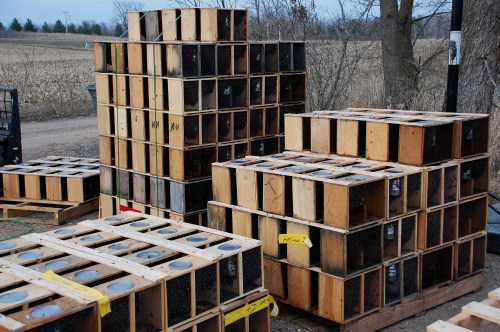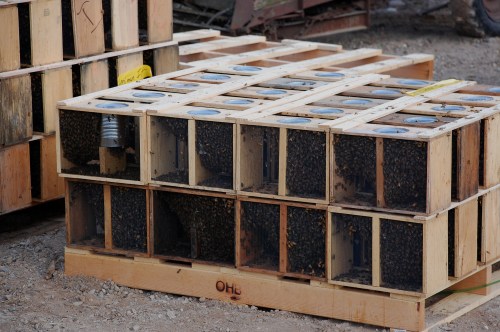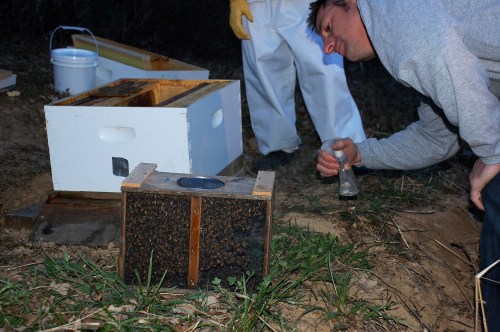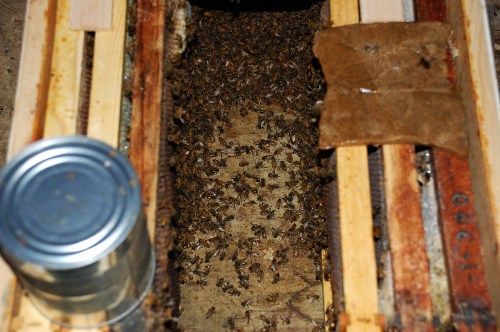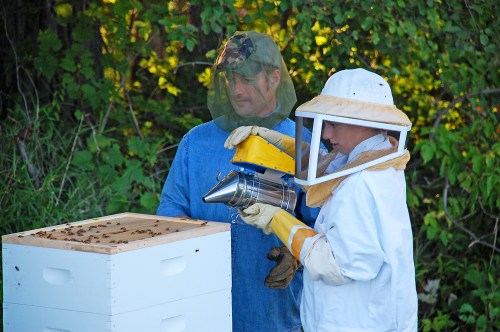Some of you right remember that we started over with our bees this season after a roller coaster of a year last summer. (See my post: Starting Over Again – Bees 2013). We purchased 2 nucs and installed several old brood frames that had pretty good honey and pollen stores from the previous year. With the honey and pollen already in the brood frames and the dandelions nearly starting to bloom, we decided that we could forego feeding the bees sugar syrup and pollen patties to get them off the ground.
Unfortunately, we had a very long cold and wet spring that kept the bees inside the hive instead of out foraging and being productive. July was a good weather month but August was very hot and dry, which are also not very productive conditions for the bees. We have learned from past experiences that the hives have a higher chance of surviving our harsh Minnesota winter if we have them fill 3 deep brood boxes before adding honey supers. Both hives grew into their 3 brood boxes in June and were ready for their honey supers a couple of weeks before the basswood trees bloomed. One hive was a little more productive and filled 2 honey supers and the other filled only 1 honey super.
In past years, I have been frustrated with the difficulty of un-capping the frames when the honey supers were loaded with 10 frames, as not all the frames were drawn to a full depth that would allow for the cappings to extend beyond the frames. When this happens we have to use a manual capping scratcher that does not open the honey cells as well for spinning. It also damages the comb much more, which requires extra effort from the bees to repair the damage the following year. When the bees are drawing and fixing comb, they are not out foraging and collecting honey. So I decided to try using only 9 frames in each honey super so that there was more room to fully draw the comb past the frames.
This approach worked quite nicely. See how easily the cappings are removed with the hot knife? This method does create more cappings, but leaving the cappings in the un-capping tubs for a couple of days was enough for them to drip clean and leave us with almost another gallon of honey. The extra cappings will also be useful in creating more candles.
It is so much fun to watch the honey flow from the spinning tank and into the double strainer. Although the entire process can only be described as a sticky mess, it is well worth the efforts.
The final results from the 3 honey supers was about 6 gallons of honey. Not a great year, but much better than last year for sure!
One thing that immediately caught our eye as we started to do the bottling process, was the very light color of the honey this year compared to earlier years. I would typically classify our honey as light amber (the jar on the right below was from last year) and this year I would have to say there is no amber color at all.
I cannot conclusively say why the big change, but here are some possible factors. This is the first year that we had only Carniolian breed, previous years have been either both hives Italian breed or one of each breed. The long cold wet spring could have limited access to some plants, and additionally the hot dry late summer period could have also limited some plants. This spring we also plowed under a dwindling alfalfa field that was adjacent to the hives. I will consult my local beekeeping guru and see if he can share some thoughts on this as well.

Below is a really strange jar that caught my attention. I had a half full jar of the previous year (darker) honey, and decided to scrape the last bit of new (lighter) honey into the same jar. Surprise, surprise…the next morning the light honey was on the bottom and they stayed separated! Obviously the new honey is more dense (less moisture) than the old honey, but why didn’t they just blend together?!?!
For that, I do not have any ready answers. Maybe one of you chemistry-minded folks can educate us.
–Jesse










